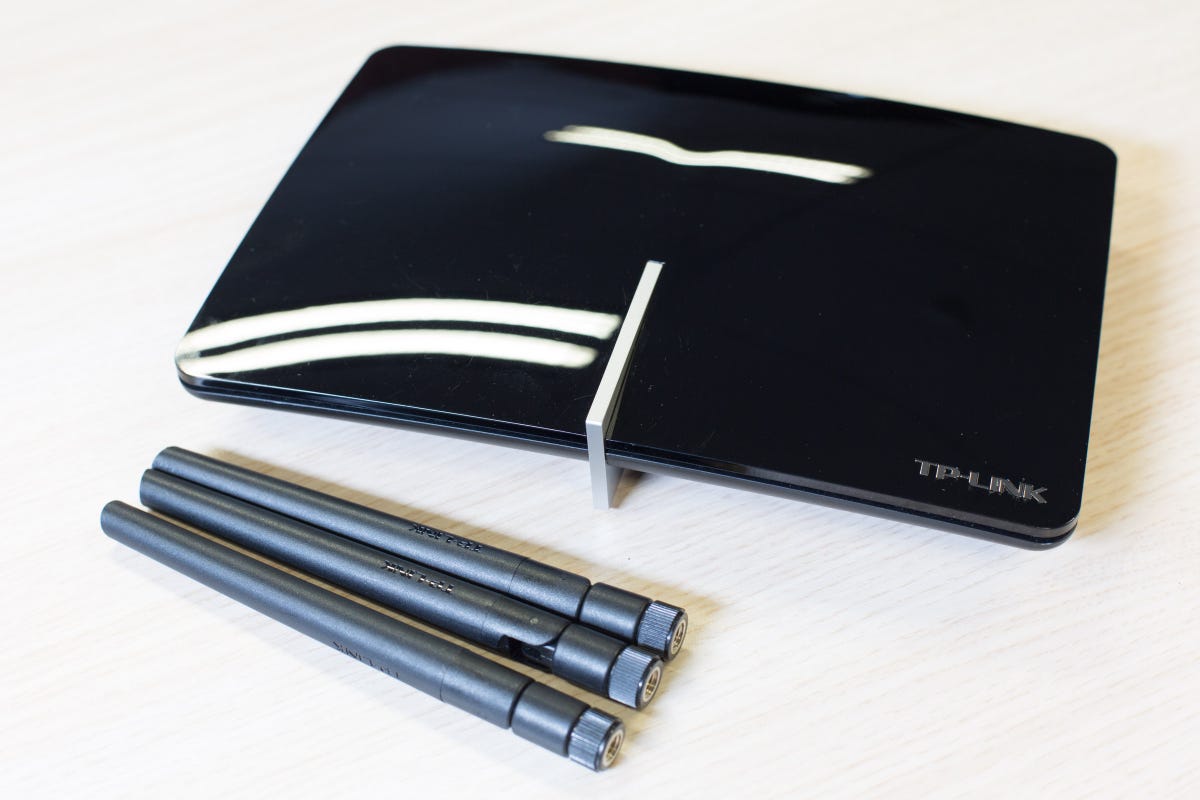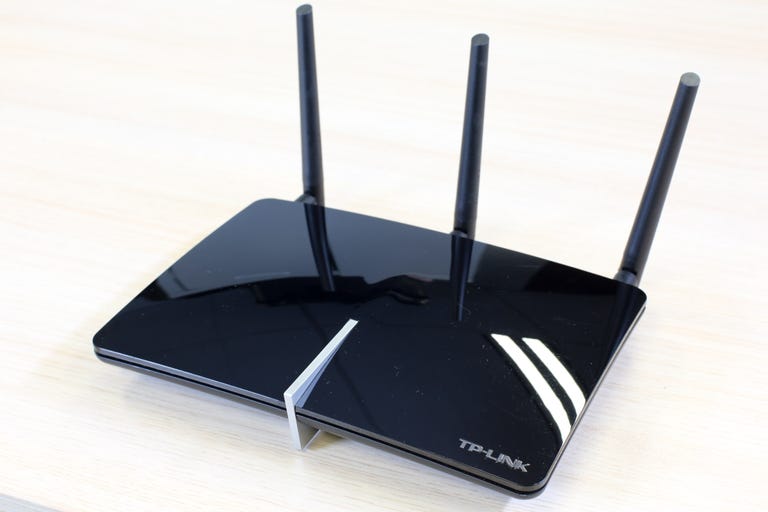 Why You Can Trust CNET
Why You Can Trust CNET TP-Link Archer D7 AC1750 review: It may not have the fastest 2.4GHz speeds, but the price is a winner
The Archer D7 may not have the 2.4GHz performance of its competitors, but the price should get your attention.
Just take a look at the price tag -- the Archer D7, an AC1750 router costs AU$169 in Australia. That's a $90 difference between that and its bigger brother, the Archer D9 . UK citizens don't get quite the same deal at £129 compared to £159, but it's still a substantial saving.
The Good
The Bad
The Bottom Line
The sacrifice? You lose a USB 3.0 port which has questionable advantage on a router, and you get slower 2.4GHz at close range. 802.11n 5GHz and 802.11ac performance remains comparable. But rest assured: amongst top-tier AC1750 and AC1900 routers, the D7 easily takes the prize as the most budget-friendly.
Design and ease of use
The piano-black Archer D7 is separated down the middle by a silver, painted bit of plastic that also helps the router to sit flat. Above this separator are the status lights -- power, line sync, Internet connection, wireless, LAN and USB. Sadly there's just the one light to accommodate the four gigabit Ethernet ports, making troubleshooting a little harder than it needs to be.

TP-Link includes a mini CD in the package, containing manual, printer software, and an "Easy Setup Assistant". This is more for those who aren't familiar with their router's web UI, and walks the user through ADSL and Wi-Fi settings. Those who go straight to the router's web UI will also find a quick setup tool, with more options therein.
Tech enthusiasts will love TP-Link's web interface -- it's spartan and straight forward. Newbies may find it a bit overwhelming, especially as it pulls no punches on technical language -- but this aside, it's all laid out in a fashion that makes sense and is easy to find what information and settings you need.
Features
The D7 has the standard four gigabit Ethernet ports, and two USB ports. It has physical buttons for both power and Wi-Fi on/off. Despite the potential through its design, it is not wall mountable.
The D7's options are fairly standard for a router of this class, the major standout feature being VLAN support (listed as "interface grouping"). Otherwise the usual firewall, single 2.4GHz guest network support, port forwarding, wireless and DSL settings are here. DynamicDNS support is included, but only covers DynDNS and No-IP as service providers.
Parental control is restricted to a time scheduled, MAC assigned URL whitelist -- add no URLs, and the associated client will effectively be cut off from the Internet.
USB support includes storage access via FTP and SMB, DLNA streaming and a print server. For printer support you'll need to install TP-Link's USB printer controller app, which is straight forward. While it suggested we hook our laptop up to the router by Ethernet during set up, wireless worked just fine.
Just like the Asus DSL-AC68U, the D7 brought up our HP Photosmart as "CQ176A" -- unlike Asus though, TP-Link's software is a little more confusing to use. It does come with an extra benefit though - the ability to use your scanner over Wi-Fi if you have a multifunction printer.
Inside the box you'll also find a line filter, phone cable, Ethernet cable, warranty card and manual.
Performance
Testing was done with firmware 0.9.1 0.7 v002d.0 Build 140624 Rel.55965n, and iPerf used to determine the maximum wireless speed at three locations: the next room, immediately upstairs with some furniture in the way, and one room away from immediately upstairs.
The wireless client used was an Asus G550 laptop with a 2x2 Intel AC7260 wireless card, as an indicator of average performance. Each WLAN is set to WPA2 personal encryption and a clear channel is chosen. Where possible the highest channel bandwidth is chosen, either 40MHz or 80MHz depending on the wireless standard. Where appropriate, transmission standard is set to 802.11n or 802.11AC only.
Due to the variable nature of wireless and surrounding WLANs, each unit was tested multiple times at various times of day to achieve a best case scenario performance value. Your own environment will see different results.
802.11n 2.4GHz performance
- Location 1
- Location 2
- Location 3
The lower-specced D7 matches the speed of the AC1750 rated Belkin AC1750DB, but gets left in the dust by the Fritz!Box 7490 and D-Link DSL2890-AL. The rest of the competitors are all AC1900 rated.
802.11n 5GHz performance
- Location 1
- Location 2
- Location 3
The D7 is competitive even with the top end of town in 5GHz, pulling our two highest results in the first two locations.
802.11ac performance
- Location 1
- Location 2
- Location 3
The D7 brings in high level AC results in line with the other AC1750 and AC1900 routers.
Storage was tested over gigabit LAN with a SanDisk Extreme NTFS formatted 64GB USB 3.0 drive plugged into the fastest USB slot, transferring a 100MB file via SMB.
USB storage performance
- Read
- Write
USB performance takes a hit compared to the D9, and is a long way behind market leaders Asus and Linksys.
Conclusions
TP-Link's D7 offers good performance for a small price -- the competing Belkin AC1750DB offering fewer features for a higher pricetag. Australians may wish to spend a little more for the D-Link DSL-2890AL to beef up their 2.4GHz performance, though.



